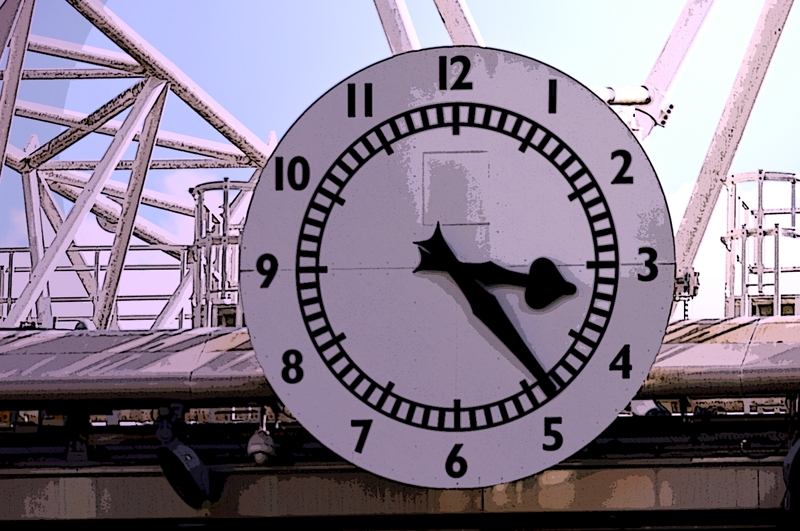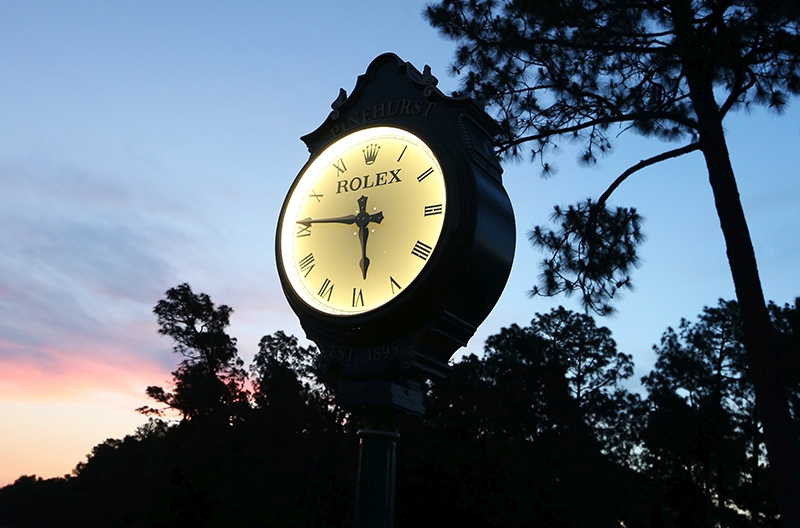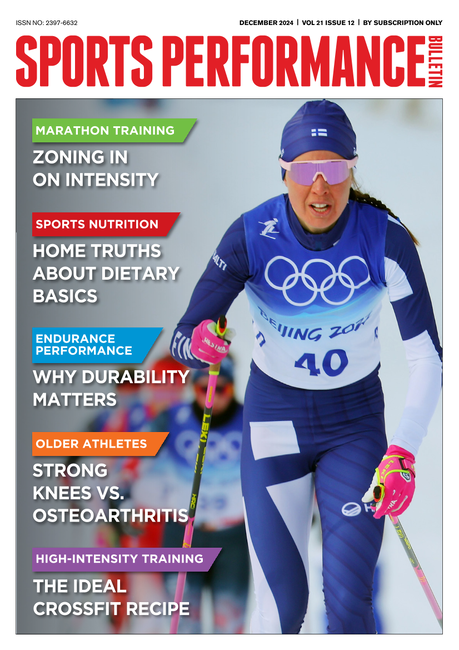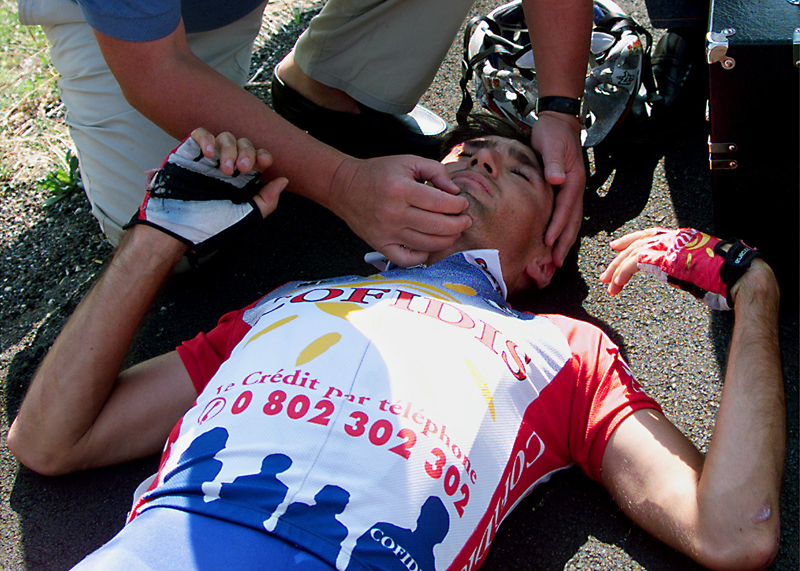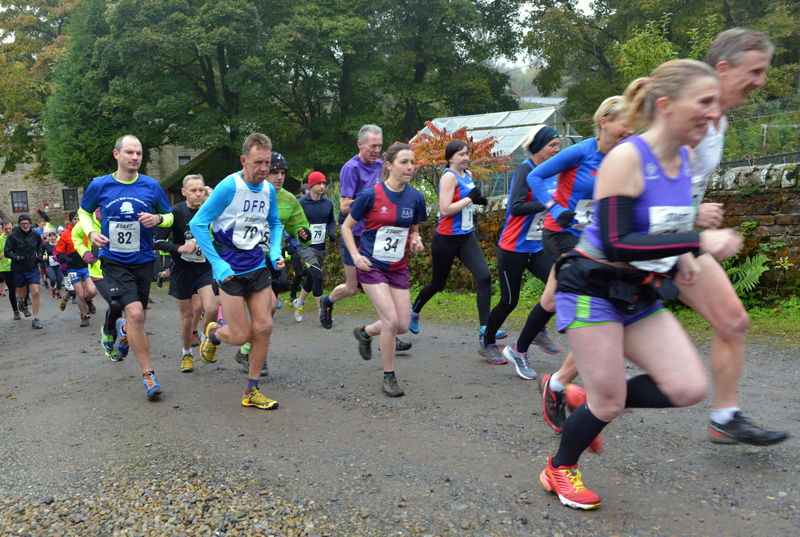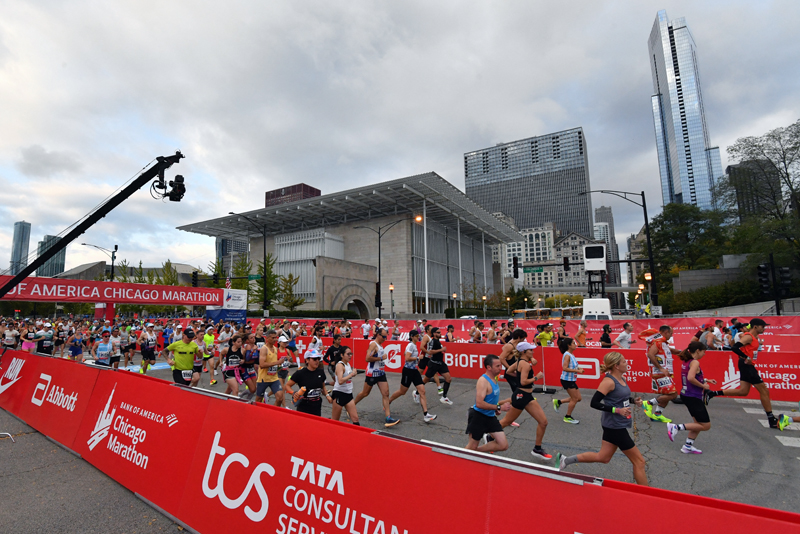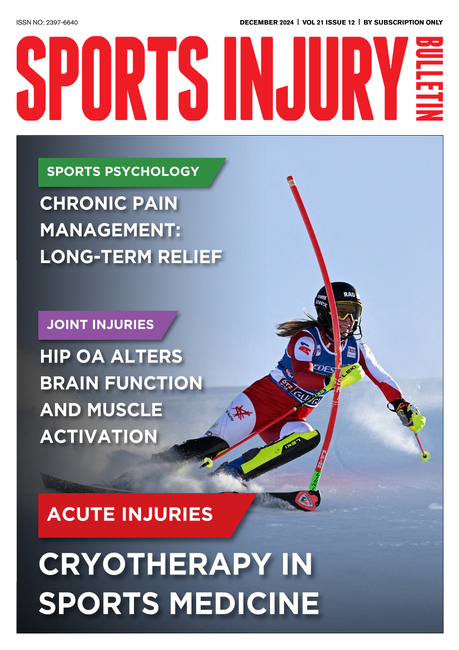You are viewing 1 of your 1 free articles. For unlimited access take a risk-free trial
Timing is everything: the rhythm of life matters

SPB looks at new research on sport performance, biological rhythms, jet lag and implications for travelling athletes
A little over four billion years ago, our planet was formed from a cloud of gas and rocks swirling around the sun. Ever since, Earth has been subjected to rhythms, the most important of which is the daily night/day rhythm governed by the daily rotation of the planet on its axis. Given humans have evolved in a world full of rhythms, it would be incredible therefore if these repeating rhythms did not exert significant and powerful effects on our physiological function. Over the past couple of decades, research into biological rhythms – so called ‘chronobiology’ - has confirmed this is indeed the case.Important rhythms
There are many biological rhythms woven into human physiology. Some are quite short duration such as alertness and attention cycles, which repeat every hour or two, and some are much longer, lasting a month or a year (see table 1). Of these, the daily night/day ‘circadian’ rhythm – governed by the light-dark cycle which occurs every 24 hours - is the most powerful rhythm affecting humans; as well as the sleep/waking cycle, it affects hormone secretions, body temperature, mental alertness and physical performance capacity through the day (see figure 1, which shows the typical daily variations of melatonin, secretion, core temperature, triacylglycerol, alertness and reaction time as a result of the circadian rhythm)(1). The monthly ‘circatrigintan’ rhythm, which governs the menstrual cycle in women, is another strong rhythm, and one that has profound impacts on physiology. The circatrigintan rhythm is also known to affect physical performance in women, even affecting injury risk (see this article)(2).Table 1: Biological rhythms affecting human biology
| Rhythm | Length | Strength | Description and/or examples |
| Ultradian | Less than 24 hours | Weak | Weaker, short-term rhythms such as 90-minute attention and alertness cycles, brain wave activity cycles, REM and non-REM phases of sleep etc. |
| Circadian | Around a day | Very strong | The normal wake/sleep cycle associated with day and night; daily variations of blood pressure and temperature |
| Circaseptan | Around 7 days | Weak | Peaks and troughs of immunity, blood pressure and heart rate |
| Circatrigintan | Varies, but averages around 29-30 days | Strong | The menstrual cycle in women |
| Circannual | Around a year | Weak, but may be stronger in some individuals | Seasonal affective depression, sexual drive |
Figure 1: Typical circadian rhythm-induced fluctuations in the body

NB: Melatonin is the ‘sleep hormone’; triacylglycerols are lipids (fats) circulating in the blood.
The circadian rhythm
As mentioned above, of all the rhythms affecting the body, the daily circadian rhythm is most profound, and best researched in the context of sport performance. As a result of the rhythmic fluctuations induced by the circadian rhythm, many people experience maximum mental alertness, fastest reaction times and highest core temperatures in the late afternoon/early evening period. By contrast, the peak in melatonin (the body’s sleep hormone) concentrations in the middle of the night period leads to maximum fatigue/sleepiness and lowest alertness at that time.The implication of these fluctuations for sportsmen and women is that concentration, skill learning, motor skill performance and muscular flexibility change throughout the day and this has indeed found to be the case. Evidence shows that these performance-related attributes tend to peak in the late afternoon/early evening, in line with core temperatures(3-6).
Moreover, research also shows that circadian rhythm is not only synchronized to the 24-hour environment via the light-dark cycle but is also modified by behavioral cycles such as eating or drinking(7). This means that when the circadian rhythm is disturbed – for example by night shifts and time zone changes, the induced changes in eating habits/mealtimes can help perpetuate the disturbance, making it harder to restore the rhythm back to normal.
Circadian rhythm and jetlag
As hinted above, travel across time zones is a sure-fire way to desynchronize internal circadian rhythms. For example, if an athlete travels from Los Angeles to compete in Miami (3 hours ahead), he or she will have an internal circadian rhythm where peak performance occurs around 5pm/6pm in LA, which equates to 8pm/9pm Miami time. More importantly, an LA athlete who heads to bed at 10.30pm Miami time will have an internal clock telling them it’s actually only 7.30pm, so will most likely struggle to fall asleep(8). If our athlete then needs to rise at 6.30am Miami time the following morning, not only will he/she likely to have lost sleep, the internal body clock will be registering 3.30am! Unsurprisingly, this will leave the athlete feeling and performing out of sorts!This transient circadian misalignment and its associated consequences are technically known as ‘desynchronosis’, or more colloquially ‘jet lag’. These disturbances last until the internal circadian rhythms adapt and synchronize to the time zone of the new destination. Research shows that the speed at which circadian rhythm resets is limited, and typically occurs at a rate of approximately 1 hour per day(9,10). When it comes to athletic performance, the effects of jet lag can be very significant; the fatigue and circadian disruption due to a mismatching of internal biological rhythms with a new time zone have been clearly shown to be detrimental to athletic recovery and performance(11).
Eastwards vs. westwards travel
The example above (travelling from LA to Miami) involves eastwards travel, and various studies have shown that eastwards travel across time zones is harder on athletes in terms of performance than the equivalent amount of westwards travel(12,13). Why is this the case? Well, estimates of the free-running circadian rhythm (how the daily cycles run if someone is removed from all dark/light stimuli) is slightly over 24 hours(14). Because the free-running is a little longer than the 24-hour day, most people adapt more easily to a time zone change that involves later timings (westwards travel) than earlier timings (eastwards travel)(15).Equally however, rapid westwards travel can be a problem when athletes have to perform late in the evening in a later time zone. For example, an athlete who flies from London to Miami to compete in an evening competition beginning at 9pm Miami time will have an internal clock time of 2am (London time). With low core temperature and high levels of the sleep hormone melatonin, it’s hardly surprising that he/she may struggle to perform!

Real-world impacts of jet lag
Although we know the physiological impacts of circadian rhythm disturbance, there’s relatively little research on exactly the kind of performance decrements that can be expected when crossing time zones, especially eastwards. Some brand new data on international soccer players shows that performance in terms of running speed and passing accuracy is negatively impacted when travelling eastwards(16). Likewise, previous data on skeleton athletes travelling to international winter sports competitions shows that eastwards travel significantly impaired their jumping abilities(17).More new research
Some more research provides a valuable insight into the effects of jet lag when travelling eastwards or westwards. In a brand new study published in the journal ‘Frontiers in Physiology’, researchers looked at the effects of jet lag on performance in National Basketball Association players(18). In particular, the researchers look at how teams were affected in terms of percentages of matched won compared to no jet lag. They also looked at whether the teams travelling across time zones experienced worse points differentials compared to no travel, and also the number of scoring opportunities.What is really neat about this research however is that it attempted to separate out the effects of jet lag from other factors. At more elite levels of team sport, athletes with knowledgeable coaches and managers travelling across time zones follow carefully constructed routines when they arrive at their destination to minimize the effects of jet lag (more later). This muddies the water when trying to establish the actual impacts. So in this study, the researchers examined data from ten seasons comprising of 11,481 NBA games from the 2011/2012 to 2020/2021 seasons. Importantly however, they split the data down into two categories:
- Away performances with jet lag - ie when teams crossed time zones to play in a match.
- Home performances - ie when teams crossed time zones to return back home and play in subsequent matches.
Why did they spit the data into home and away matches like this when the same number of time zones were crossed in either direction? Well typically, athletes plan ahead for travelling to away competitions, perhaps travelling a day or two earlier to allow internal clocks to adjust if the competition is at a time that is out of phase with their habitual time zone. However, when travelling back home, there are often no such elaborate preparations. Athletes just fly back and ‘get on with it’, assuming that things will sort themselves out quickly simply because they are at home!
The findings
The main findings were as follows (see figure 2 also):- Among teams travelling eastwards (but not westwards) to play their next match at home, the presence of jet lag was associated with 6.03% reduced chance of winning, with an average 1.29 fewer points and fewer scoring opportunities.
- As the magnitude of eastward jet lag increased, the home team points differential worsened. One hour of jet lag resulted in an average of 0.72 points fewer scored; with two hours of jet lag, 4.53 fewer points were scored.
- The were NO significant associations were found between jet lag (westwards or eastwards) for away team performances.
Figure 2: Association between directional jet lag and home performance(18)

Left (A): Less points were scored as the magnitude of eastwards jet lag increased, with 2 hours of jet lag having a very significant negative impact. Right (B): Eastwards travel with plenty of time for the circadian rhythm to resychronize (grey) resulted in the same performance as no travel. However, without sufficient time to adapt, a significant drop in performance (points scored) was observed.
Practical implications
The researchers in the above study concluded that sleep and circadian disruption associated with eastward travel across time zones may have significant adverse consequences on performance, particularly when recovery time is limited. They also recommended that sports organizations and coaches should consider chronobiology-informed scheduling and interventions to maximize recovery and performance of their athletes. But what does this mean in practice?For a specific competition (where the time of the event is usually fixed), athletes can manipulate their circadian rhythm so that they’re nearer their peak at the time of the event. The same applies when competing abroad in different time zones. Although the circadian rhythm is free-running, it can be ‘reset’ with the help of appropriate environmental stimuli.
The most powerful of these stimuli is light, which strikes receptors in the retina of the eyes containing a photo pigment called melanopsin. This causes stimulation of the suprachiasmatic nucleus (SCN), a distinct group of cells located in the hypothalamus region of the brain, and these cells help interpret information on day length and pass it on to the pineal gland (a pea-like structure found near the base of the brain), which then secretes the hormone melatonin in response.
The SCN is particularly responsive to blue light with wavelengths of around 468nm(19). This has important implications for athletes wishing to reset circadian rhythm. During mid-summer months or for those living near the equator, simply gradually going to bed and getting up earlier or later (see below) will provide a sufficient stimulus because there’s plenty of bright sunlight (containing blue wavelengths) around to stimulate the SCN. However at other times, particularly at more northern latitudes, light therapy may be useful.
Special lightbox devices can provide a powerful and portable source of 468nm blue light, thereby mimicking the effect that exposure to bright midday summer sunshine has. To advance circadian rhythm (ie shift it earlier, needed for example when travelling east), exposure to blue light first thing in the morning is recommended; to delay circadian rhythm (make the peak occur later – useful when travelling west), evening exposure to blue light is recommended. Here are some other tips for manipulating/resetting circadian rhythm:
- Allow approximately one day per time zone (hour) for circadian rhythm adjustment when travelling across zones, especially when travelling east.
- Adaptation when travelling west (delaying rhythm) tends to be easier (because the free-running circadian rhythm is slightly longer than 24 hours) and may require less adaptation.
- As well as evening light exposure, research suggests that late evening exercise can also help delay and resyncronize circadian rhythm (useful for travelling west)(20).
- When travelling east or preparing yourself for a very early competition, resetting circadian rhythm is best performed in advance using several smaller steps of 30 minutes over a longer period, rather than fewer but larger steps(21). This strategy can be combined with bright light therapy for maximum benefits.
- Lancet 2001. 358: 999-1005
- Sports Med. 2006;36(10):847-62
- Int J Sports Med. 1997 Oct;18(7):538-42
- Eur J Appl Physiol. 2004 Jun;92(1-2):69-74
- Can J Sport Sci. 1992 Dec;17(4):316-9
- Int J Sports Med. 2004 Jan;25(1):14-9
- BMJ Open Sport Exerc Med. 2018; 4 (1), e000443
- Lancet 1997; 350 (9091), 1611–1616
- Natl. Acad. Sci. U.S.A. 2021; 114 (6), 1407–1412
- Psychiatry Clin. Neurosci. 1999; 53 (2), 257–260
- Clin. Sleep Med. 2021; 17 (2), 243–248
- Nature 1995; 377 (6550), 583
- Sport Behav. 1999; 22 (2), 279–287
- Science 1999; 284 (5423), 2177–2181
- Biol. Rhythms. 2003 18 (4), 318–328
- Res Sports Med. Mar-Apr 2022;30(2):145-155
- Eur J Appl Physiol. 2012 May;112(5):1663-9
- Front Physiol. 2022 Jun 16;13:892681. doi: 10.3389/fphys.2022.892681
- Biol Psychiatry. 2006 Mar 15;59(6):502-7
- Am J Physiol Regul Integr Comp Physiol. 2004 Jun;286(6):R1077-84
- Aviat Space Environ Med. 2006 Jul;77(7):677-86
Related Files
Newsletter Sign Up
Testimonials
Dr. Alexandra Fandetti-Robin, Back & Body Chiropractic
Elspeth Cowell MSCh DpodM SRCh HCPC reg
William Hunter, Nuffield Health
Newsletter Sign Up
Coaches Testimonials
Dr. Alexandra Fandetti-Robin, Back & Body Chiropractic
Elspeth Cowell MSCh DpodM SRCh HCPC reg
William Hunter, Nuffield Health
Keep up with latest sports science research and apply it to maximize performance
Today you have the chance to join a group of athletes, and sports coaches/trainers who all have something special in common...
They use the latest research to improve performance for themselves and their clients - both athletes and sports teams - with help from global specialists in the fields of sports science, sports medicine and sports psychology.
They do this by reading Sports Performance Bulletin, an easy-to-digest but serious-minded journal dedicated to high performance sports. SPB offers a wealth of information and insight into the latest research, in an easily-accessible and understood format, along with a wealth of practical recommendations.
*includes 3 coaching manuals
Get Inspired
All the latest techniques and approaches
Sports Performance Bulletin helps dedicated endurance athletes improve their performance. Sense-checking the latest sports science research, and sourcing evidence and case studies to support findings, Sports Performance Bulletin turns proven insights into easily digestible practical advice. Supporting athletes, coaches and professionals who wish to ensure their guidance and programmes are kept right up to date and based on credible science.
